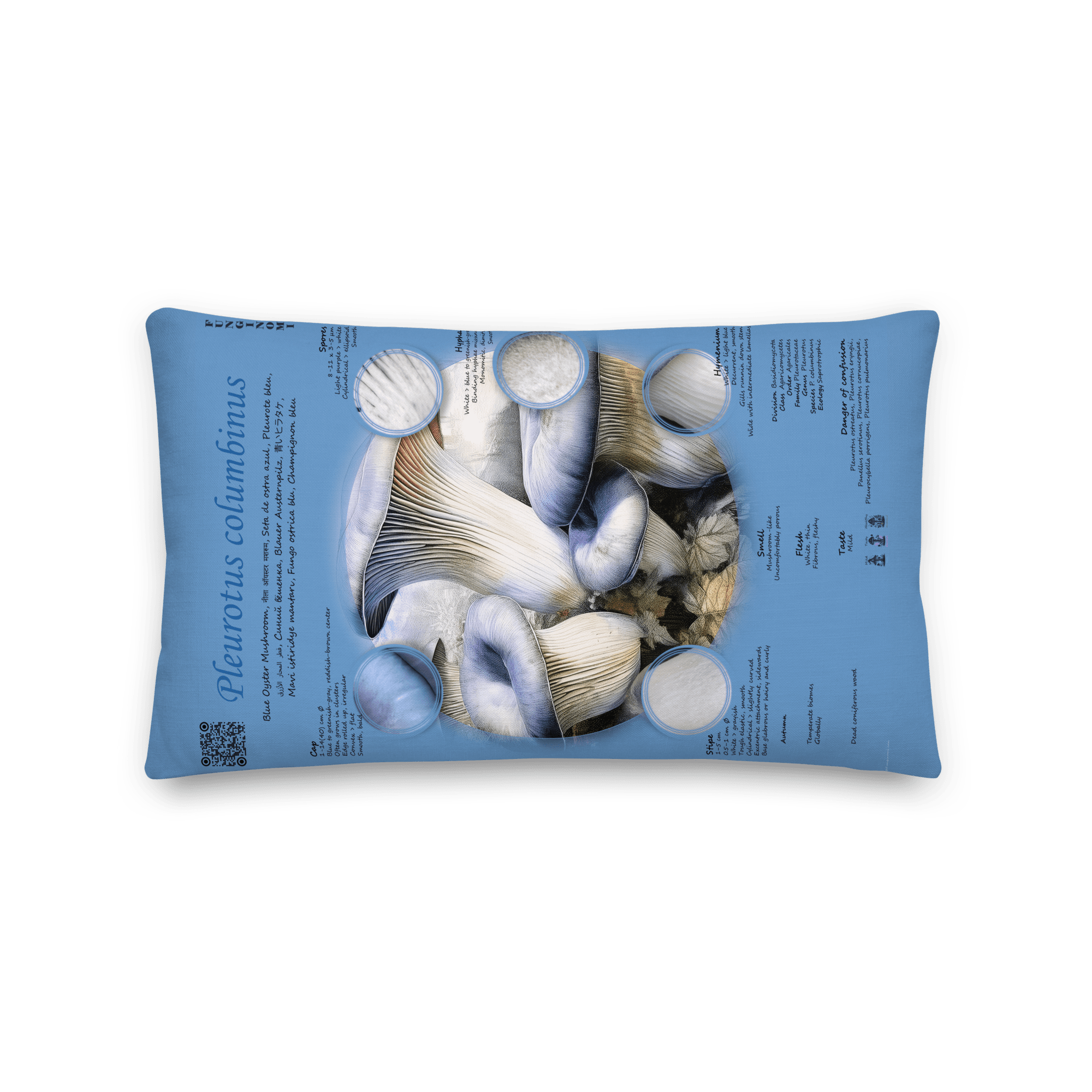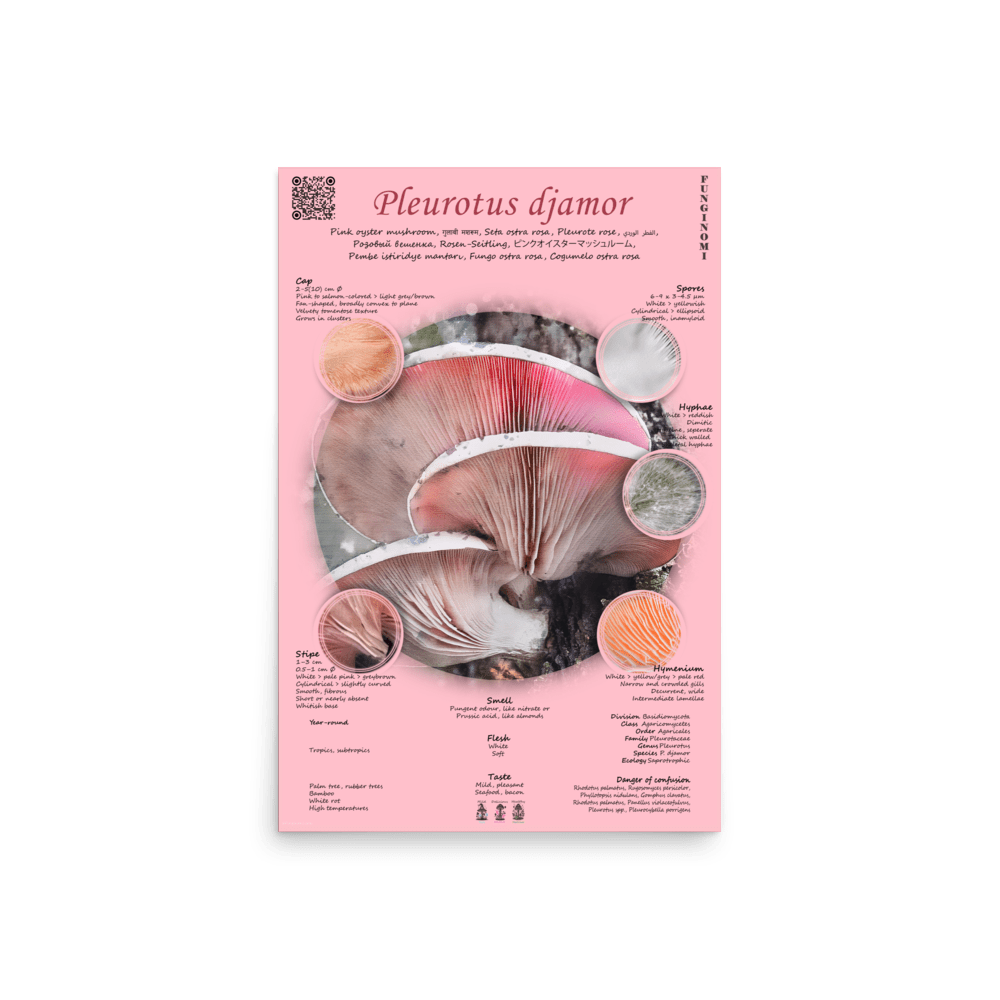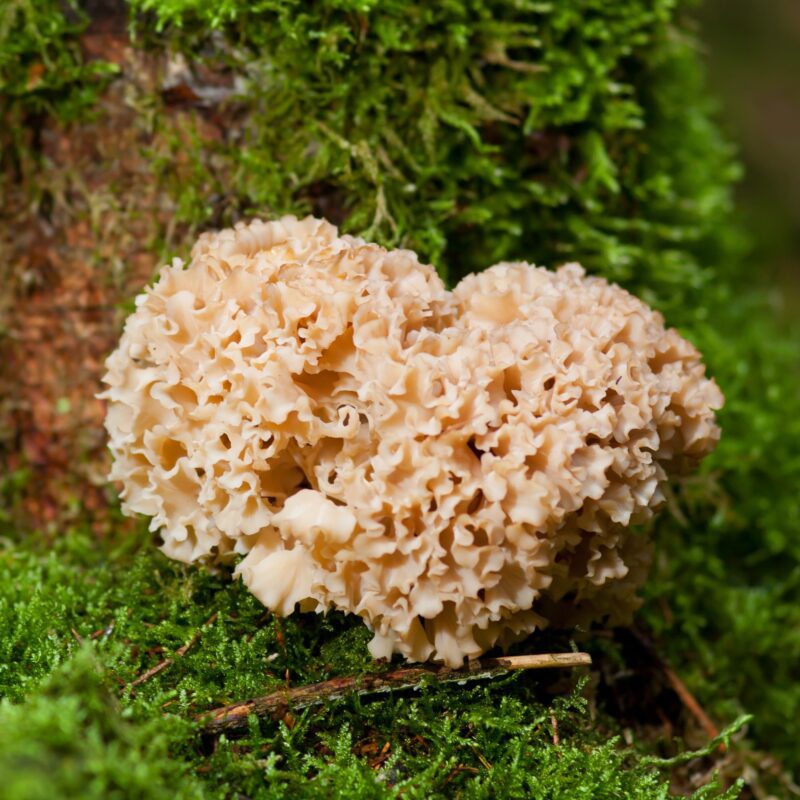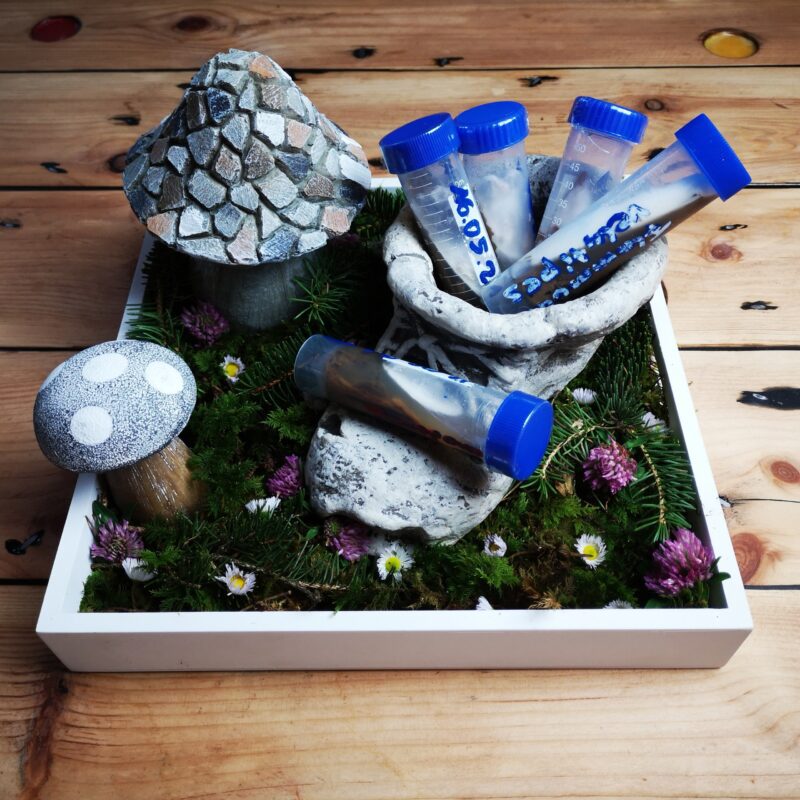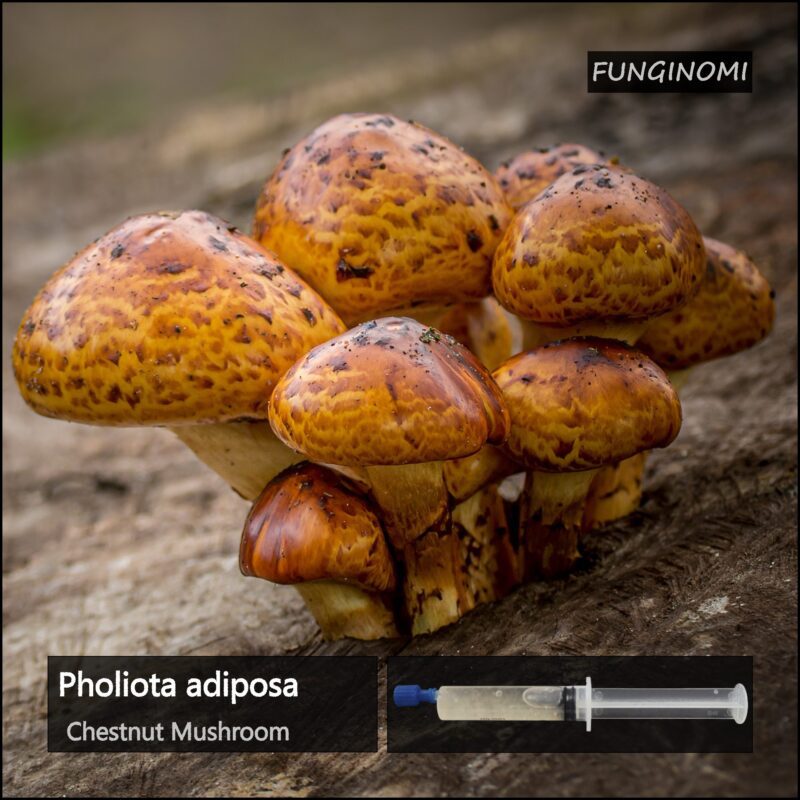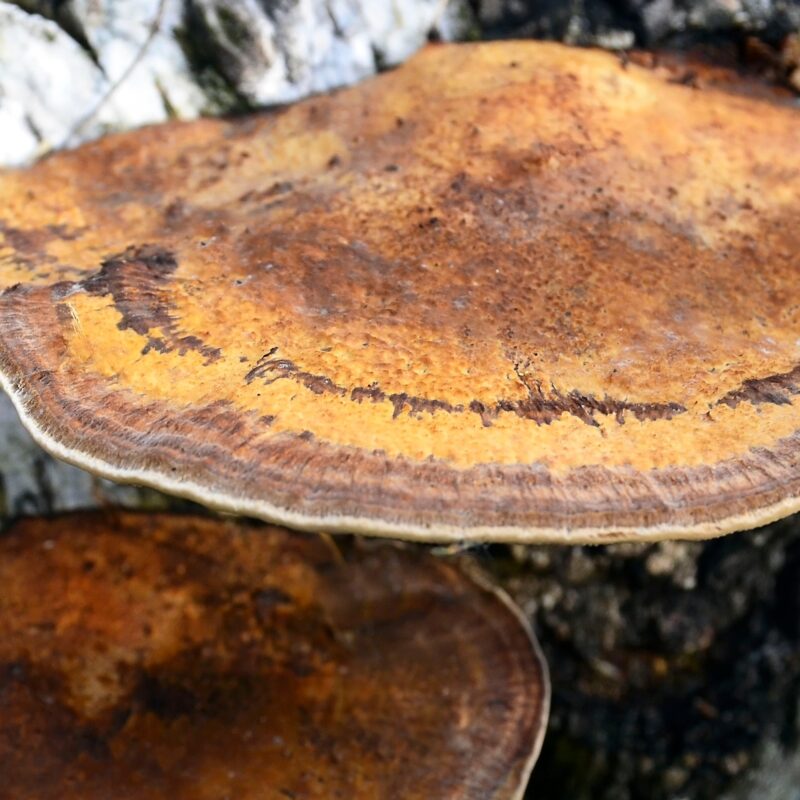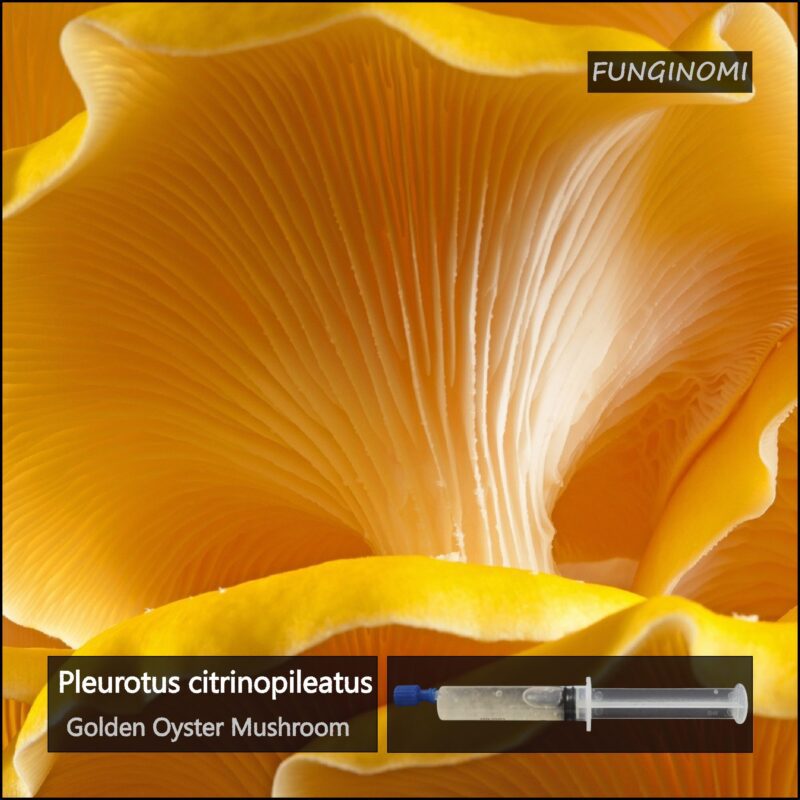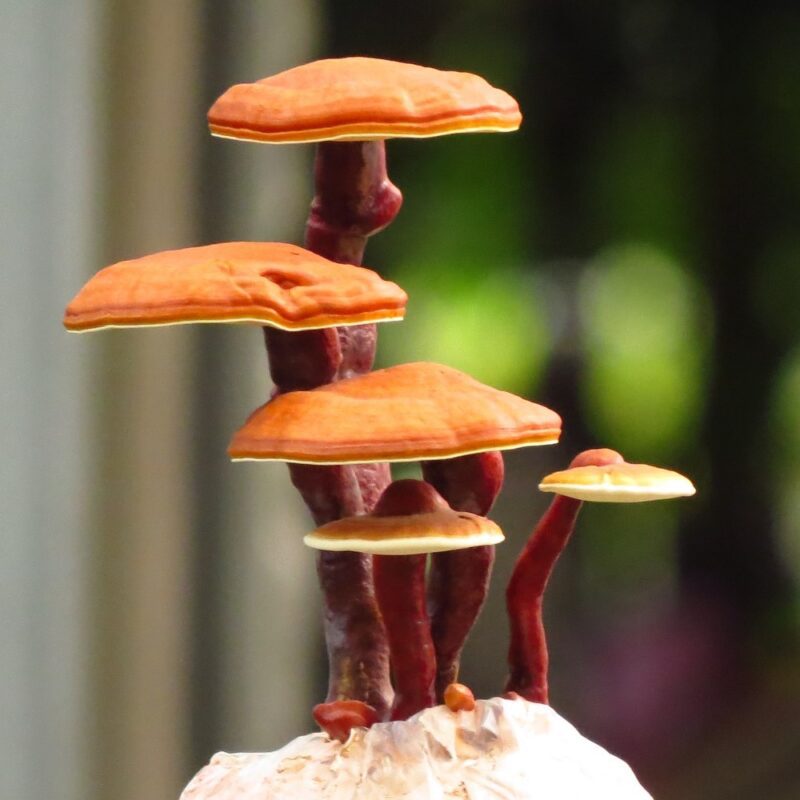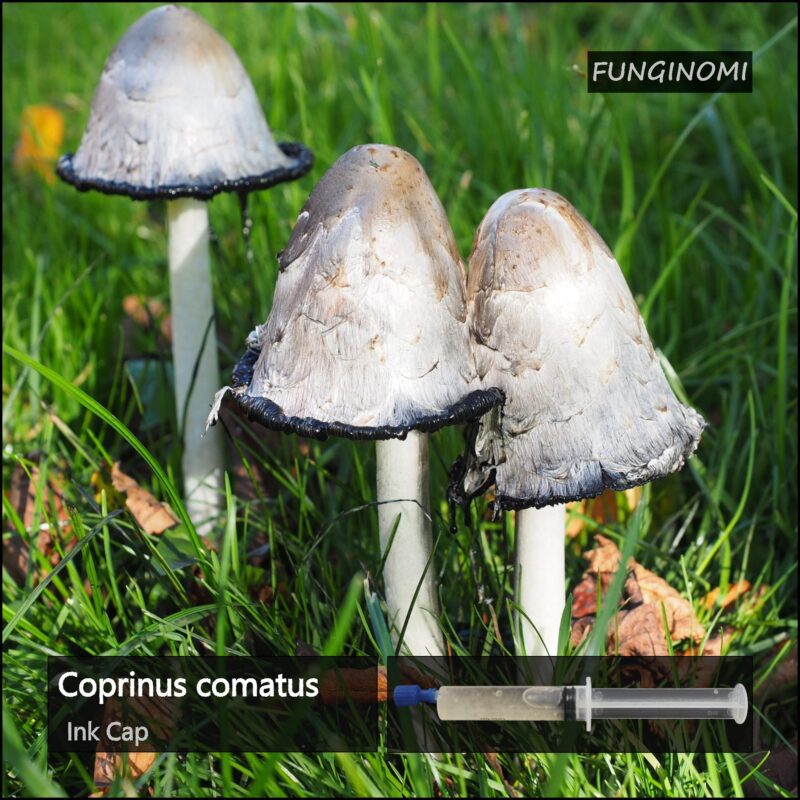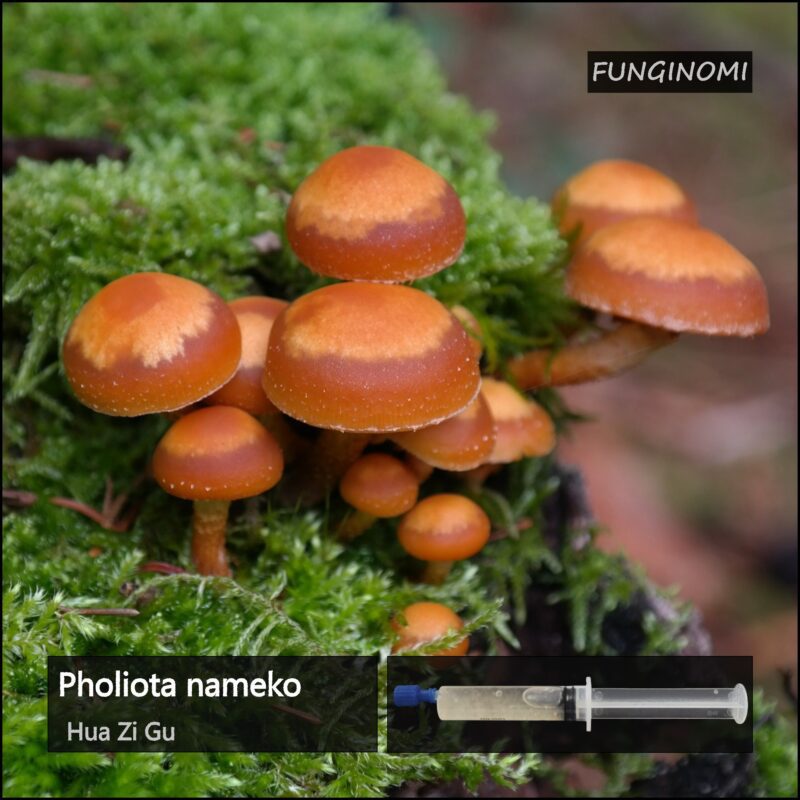Aspergillus oryzae
Description
Aspergillus flavus var. oryzae is a mold (watering can mold) that plays a major role in Japanese cuisine. It is the most important among the Kōji fungi.
Aspergillus oryzae commonly used in the production of koji, requires specific conditions for optimal growth. While it doesn’t “fruit” in the traditional sense like mushrooms, it does grow and sporulate on substrates.
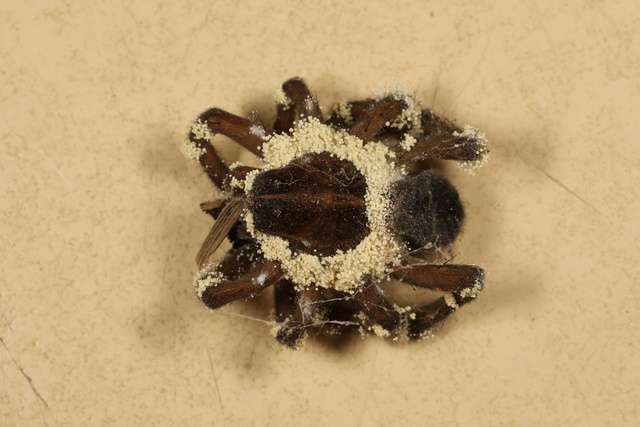
© John Plischke (John Plischke)
It is used to ferment soy in solid bioreactors to produce miso and soy sauce. The delicacy Daitokuji-Nattō, which originated in Kyōto, is also made with Aspergillus flavus var. oryzae inoculated soybeans. Is used to make sake, yellow kōji is extremely sensitive to temperature; its moromi can become slightly sour during fermentation. Mainly white and black kōji are used in shōchū production, while only yellow kōji (A. oryzae) is often used in sake production.
Collection August 2024
Grab them, they are hot! 😊
Properties
A. flavus var. oryzae is one of the main industrial sources for the production of starch-degrading α-amylases. It is one of the organisms that are fully gene sequenced.
Although it has no specific common name, it can also be recognized as the “aflatoxin producer”. Aflatoxin is a toxic and carcinogenic compound produced by A. flavus.
Growing
How to Grow Aspergillus oryzae?
Aspergillus flavus has the capacity to grow on many nutrient sources. It is mainly a saprophyte and grows on dead plant and animal tissue in the soil, which is important for the recycling of nutrients. Because it grows well on decaying vegetation, one common place you might find Aspergillus is in compost or on fallen leaves. However, this fungus is also a parasite and can use living organisms as hosts. Host species include corn, peanuts, nut trees, cotton, and even humans.
Typically this organism favors hot, dry conditions which makes it unique in comparison to other fungi. The best temperature for growth is 37°C (98.6°F). However, it can grow at any temperature between 12-48°C (54-118°F). Aspergillus flavus is omnipresent in nature but has a more limited growth indoors. Aspergillus molds thrive best in oxygen-rich environments and also on materials that are rich in carbon which they feed off of for nutrients.
PH Levels
Agar Culture Media
5.0 – 6.0
Spawn Run
5.5 – 6.5
Fruiting Phase
none
Harvest
none
Any Sale Helps us Doing what we Love 😊
S
|
|
||
|---|---|---|---|
Temp °C |
30-35 | you use only the spawn of this mushroom |
|
Relative Humidity % |
60-80 | ||
Duration d |
3 | ||
CO2 ppm |
>10000 | ||
FAE per h |
0-1 | ||
Light lux |
– |
How to make Koji mold from Aspergillus oryzae?
This cycle is essential for producing various fermented foods, including sake, soy sauce, and miso. Here’s an overview of the cropping cycle:
1. Preparation of Substrate
- Selection of Substrate: Typically, polished rice, soybeans, or barley are used as substrates.
- Cleaning and Soaking: The selected substrate is thoroughly washed to remove impurities and soaked in water to hydrate.
- Steaming: The hydrated substrate is steamed to soften it, making it more suitable for mold growth.
2. Inoculation
- Cooling the Substrate: After steaming, the substrate is allowed to cool to a temperature favorable for mold growth (30-32°C or 86-90°F).
- Inoculation with Spores: Aspergillus oryzae spores are evenly sprinkled over the cooled substrate and mixed thoroughly to ensure even distribution.
3. Incubation and Growth
- Incubation Conditions: The inoculated substrate is placed in a warm, humid environment to promote mold growth. Ideal conditions are 30-32°C (86-90°F) with high humidity.
- Monitoring and Mixing: During the incubation period, the substrate is monitored and occasionally mixed to ensure uniform growth and prevent overheating.
- Duration: This stage typically lasts for 40 to 48 hours. During this time, the Aspergillus oryzae spores germinate and mycelium spreads throughout the substrate, converting it into koji.
4. Harvesting
- Completion of Growth: The koji is considered ready when the substrate is fully colonized by the mold, indicated by a white or yellowish mycelium covering the substrate.
- Harvesting: The fully grown koji is harvested and can be used immediately for fermentation processes or dried for later use.
5. Post-Harvest Processing
- Drying (Optional): If not used immediately, the koji can be dried to prolong its shelf life. Drying is done under controlled conditions to preserve the enzymatic activity.
- Storage: Dried koji should be stored in a cool, dry place to maintain its quality until it is ready to be used.
How to make Sake with Aspergillus oryzae?
Ingredients and Equipment
- 1 kg (2.2 lbs) sushi rice
- 2 liters (2 quarts) water
- 1 teaspoon yeast (sake yeast or wine yeast)
- 5 grams (0.18 oz) Aspergillus oryzae (koji mold spores)
- Fermentation vessel (glass or food-grade plastic)
- Steamer or large pot for cooking rice
- Cloth or towel
- Thermometer
- Stirring utensil (sanitized)
Steps
1. Prepare the Rice
- Rinse the Rice: Wash the sushi rice thoroughly in cold water until the water runs clear.
- Soak the Rice: Soak the rice in water for about 4-8 hours, then drain.
- Steam the Rice: Steam the rice for about 45 minutes or until it is fully cooked and sticky. Allow it to cool to room temperature.
2. Inoculate the Rice with Koji Mold
- Spread the Rice: Spread the cooled steamed rice on a clean surface or a large tray.
- Inoculate with Aspergillus oryzae: Sprinkle the koji mold spores evenly over the rice. Mix well to ensure even distribution.
- Incubate the Rice: Place the rice in a shallow container and cover it with a cloth. Keep it in a warm place (30-32°C or 86-90°F) for 48 hours. Stir the rice every 12 hours to ensure even growth of the mold.
3. Create the Starter Mash (Moto)
- Prepare a Portion of Koji Rice: Take about 200 grams (7 oz) of the koji rice.
- Mix with Water and Yeast: Mix the koji rice with 1 liter (1 quart) of water and the yeast in the fermentation vessel.
- Ferment the Moto: Allow this mixture to ferment for 5-7 days at room temperature, stirring daily.
4. Create the Main Mash (Moromi)
- First Addition (Hatsuzoe):
- Add another 300 grams (10.6 oz) of steamed rice and 1 liter (1 quart) of water to the moto. Mix well.
- Allow this mixture to ferment for 1 day.
- Second Addition (Nakazoe):
- Add another 300 grams (10.6 oz) of steamed rice and 1 liter (1 quart) of water. Mix well.
- Allow this mixture to ferment for 1 day.
- Third Addition (Tomezoe):
- Add the remaining 200 grams (7 oz) of steamed rice and 1 liter (1 quart) of water. Mix well.
- Allow this mixture to ferment for about 20-30 days, stirring daily.
5. Pressing and Filtering
- Press the Mash: After the fermentation period, strain the mash through a fine mesh or cheesecloth to separate the liquid (sake) from the solid rice particles.
- Filter the Sake: You can further filter the sake through activated charcoal if desired to improve clarity.
6. Pasteurization (Optional)
- Heat the Sake: To pasteurize, heat the sake to about 60°C (140°F) for a few minutes. This step is optional but helps to stabilize the sake and prevent spoilage.
7. Bottling and Aging
- Bottle the Sake: Transfer the sake into clean, sanitized bottles.
- Age the Sake: Allow the sake to age for a few weeks to a few months in a cool, dark place to develop its flavors.
Cropping Cycle
Substrate Preperation
Duration: 6-12 hours
- Selection of Substrate: Choose polished rice, barley, or soybeans.
- Washing and Soaking: Wash thoroughly to remove impurities and soak to hydrate (typically 6-8 hours for rice or barley, 12 hours for soybeans).
- Steaming: Steam the soaked substrate to cook it, making it more suitable for mold growth (about 1 hour).
Cooling and Inoculation
1-2 hours
- Cooling: Spread the steamed substrate on a clean surface to cool it to around 30-32°C (86-90°F).
- Inoculation: Sprinkle Aspergillus oryzae spores evenly over the cooled substrate and mix thoroughly to ensure even distribution.
Incubation and Growth
40-48 hours
- Initial Incubation (12-20 hours):
- Conditions: Place the inoculated substrate in a warm, humid environment (30-32°C or 86-90°F).
- Monitoring: Check regularly to ensure even growth and prevent overheating.
- Mixing: Occasionally mix the substrate to maintain even mold distribution.
- Secondary Incubation (20-28 hours):
- Conditions: Maintain temperature and humidity, continue monitoring.
- Mixing: Mix the substrate again if necessary to ensure even growth and to manage temperature.
Harvesting
1-2 hours
- Completion of Growth: The koji is ready when the substrate is fully colonized by the mold, indicated by a white or yellowish mycelium.
- Harvesting: Transfer the koji to a clean container for immediate use or proceed with drying.
Post Harvest
Duration: Varies
- Drying: If not used immediately, dry the koji under controlled conditions to preserve enzymatic activity. This step can take several hours to a day.
- Storage: Store dried koji in a cool, dry place until needed.
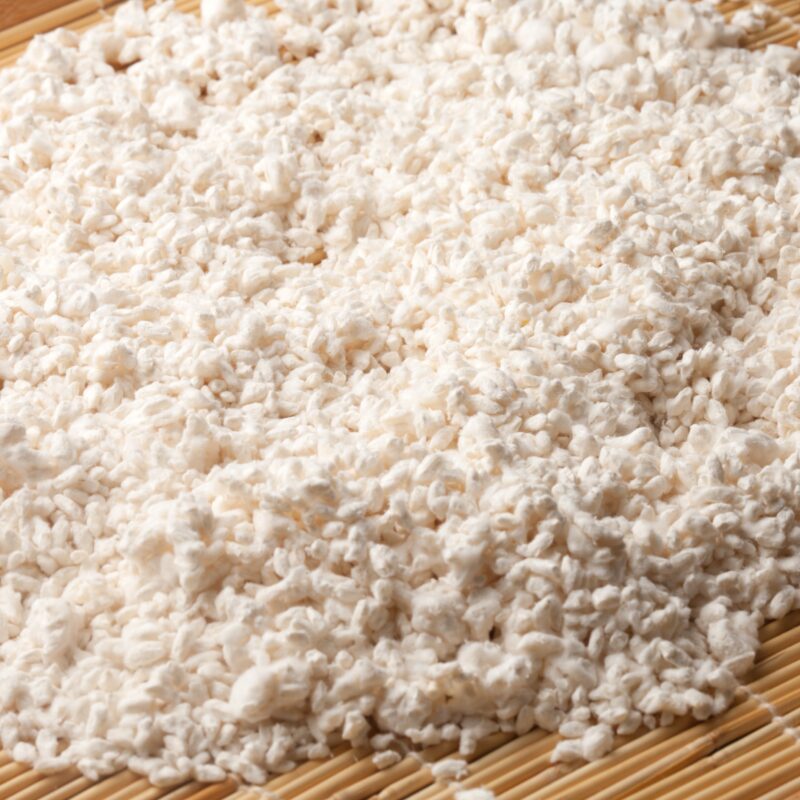
How to make Agar Culture Media for A. oryzae?
- Dissolve the malt extract and agar in distilled water.
- Sterilize the solution by autoclaving at 121°C for 15-20 minutes.
- Pour the sterilized media into petri dishes or other containers under sterile conditions.
- The Yeast is optional, but you can add it to any recipe for nutritions, same for Peptone.
Sabouraud Dextrose Agar (SDA)
Ingredients:
- 40 g dextrose
- 10 g peptone
- 15 g agar
- 1 liter distilled water
Preparation:
- Dissolve the dextrose, peptone, and agar in 1 liter of distilled water.
- Heat the mixture until the agar is completely dissolved.
- Autoclave the medium at 121°C for 15 minutes to sterilize.
- Pour the medium into sterile petri dishes and allow it to solidify.
Potato Dextrose Agar (PDA)
Ingredients:
- 200 g potato infusion (from 200 g sliced potatoes boiled in water and filtered)
- 20 g dextrose (glucose)
- 15 g agar
- 1 liter distilled water
Preparation:
- Boil 200 g of sliced potatoes in 1 liter of distilled water for about 30 minutes.
- Filter the potato infusion through cheesecloth or a fine sieve to remove the solids.
- Add 20 g of dextrose and 15 g of agar to the potato infusion.
- Heat the mixture until the agar is completely dissolved.
- Autoclave the medium at 121°C for 15 minutes to sterilize.
- Pour the medium into sterile petri dishes and allow it to solidify.
Malt Extract Agar (MEA)
Ingredients:
- 20 g malt extract
- 20 g dextrose
- 20 g peptone
- 15 g agar
- 1 liter distilled water
Preparation:
- Dissolve the malt extract, dextrose, peptone, and agar in 1 liter of distilled water.
- Heat the mixture until the agar is completely dissolved.
- Autoclave the medium at 121°C for 15 minutes to sterilize.
- Pour the medium into sterile petri dishes and allow it to solidify.
Czapek-Dox Agar (CZA)
Ingredients:
- 30 g sucrose
- 2 g sodium nitrate
- 1 g dipotassium phosphate
- 0.5 g magnesium sulfate
- 0.5 g potassium chloride
- 0.01 g ferrous sulfate
- 15 g agar
- 1 liter distilled water
Preparation:
- Dissolve all the ingredients in 1 liter of distilled water.
- Heat the mixture until the agar is completely dissolved.
- Autoclave the medium at 121°C for 15 minutes to sterilize.
- Pour the medium into sterile petri dishes and allow it to solidify.
Fruiting Containers
Trays
- Description: Shallow, wide trays made of stainless steel, plastic, or food-grade materials.
- Use: The steamed substrate (usually rice, barley, or soybeans) is spread out in a thin layer on the tray.
- Benefits: Allows for even distribution of the substrate and easy access for mixing and aeration.
Wooden Koji Boxes
- Description: Traditional wooden boxes specifically designed for koji production, often made of cedar or other non-reactive woods.
- Use: Steamed substrate is placed in these boxes, and the wood helps maintain a stable temperature and humidity.
- Benefits: Wood can naturally regulate moisture and provide slight aeration, creating a favorable environment for mold growth.
Plastic or Stainless Steel Containers
- Description: Large, shallow plastic or stainless steel containers with lids.
- Use: Substrate is placed in these containers, which are covered with breathable cloth to maintain humidity while allowing air exchange.
- Benefits: Easy to clean, durable, and can be used for larger batches of koji.
Koji Fermentation Rooms
- Description: Specially designed rooms or chambers with controlled temperature and humidity.
- Use: Trays or boxes of inoculated substrate are placed on shelves in the room.
- Benefits: Provides precise control over environmental conditions, which is essential for consistent koji production on a commercial scale.
Koji Incubators
- Description: Small, specialized incubators that can control temperature and humidity, often used for smaller batches.
- Use: Substrate is placed in trays or containers within the incubator.
- Benefits: Ideal for research or small-scale production, providing a highly controlled environment.
Large Bowls Covered with Cloth
- Description: Wide, shallow bowls or basins covered with a breathable cloth.
- Use: Substrate is placed in the bowl and mixed periodically to ensure even mold growth.
- Benefits: Simple and accessible method for home or small-scale koji production.
Substrate
Aspergillus oryzae thrives on substrates such as polished rice, barley, and soybeans, with polished rice being the most commonly used. To make a starter mix, combine 1 kg of polished rice with Aspergillus oryzae spores (typically 0.1-0.2 grams or according to the supplier's instructions). The rice should be washed, soaked for 6-8 hours, steamed for 45-60 minutes, and then cooled to 30-32°C before inoculating with the spores. Mix thoroughly to ensure even distribution, then incubate in a warm, humid environment for 40-48 hours until the rice is fully colonized by the mold.
Additives
1. Nutrient-Rich Additives
- Yeast Extract: Provides additional vitamins and amino acids to support mold growth.
- Peptone: Supplies nitrogen and promotes enzymatic activity.
- Soy Flour: Enhances protein content and supports robust mold development.
2. Mineral Supplements
- Magnesium Sulfate (Epsom Salt): Essential for enzyme activation and overall growth.
- Potassium Phosphate: Supports cellular energy and growth processes.
3. Sugars
- Glucose: Simple sugar that provides an immediate energy source for the mold.
- Malt Extract: Rich in carbohydrates and nutrients, supporting vigorous growth.
4. pH Adjusters
- Calcium Carbonate: Helps maintain a stable pH, creating a favorable environment for mold growth.
- Citric Acid: Can be used in small amounts to adjust pH levels as needed.
5. Moisture Enhancers
- Humectants (e.g., Glycerol): Help retain moisture within the substrate, providing a consistent environment for growth.
Example Additive Mix
For a 1 kg batch of substrate (polished rice), you might add:
- 5 g yeast extract
- 5 g peptone
- 2 g magnesium sulfate
- 2 g potassium phosphate
- 10 g glucose
Biological efficiencie
The biological efficiency of Aspergillus oryzae is largely determined by its ability to convert substrates into valuable products through fermentation. This mold is highly efficient in breaking down complex carbohydrates, proteins, and lipids into simpler compounds, thanks to its robust enzymatic profile, which includes amylases, proteases, and lipases. These enzymes facilitate the rapid and thorough degradation of substrates like rice, barley, and soybeans, resulting in the production of koji, a critical ingredient in traditional Japanese fermentations such as sake, miso, and soy sauce. The efficiency of Aspergillus oryzae in this process is not only crucial for high yield and quality of the final products but also for ensuring the economic viability of fermentation operations. Its effectiveness in converting substrates to valuable end products showcases its significant role in both traditional and modern biotechnological applications.
Sometimes we miss a piece
Growing Chracteristics
Identification
Natrual Habitat
Aspergillus flavus var. oryzae is a pathogenic fungus whose spores are ubiquitous in nature. It can cause aspergillosis in animals and humans.
Aspergillus oryzaecan often be found growing inside dirty air conditioners inside of buildings or in your own home. This has even been known to be a problem in some hospitals. Aspergillus may also grow on or inside walls in homes, especially if the house is damp or has been damaged by flooding.
Additional Information
Conidiophores:
- Conidiophores are the specialized structures that bear the spores. They are typically long, smooth, and terminate in a vesicle where the spores are formed.
Colony Morphology:
- Colonies of Aspergillus oryzae on agar media typically appear velvety or powdery, starting white, then becoming yellowish, and finally greenish-yellow as the conidia mature.
Microscopic Features:
- Under a microscope, Aspergillus oryzae shows septate hyphae, conidiophores with a swollen vesicle at the tip, and chains of conidia.
How to identify A. oryzae
Cap
mold
no cap
Hymenium
no hymenium
spores produced on conidiophores
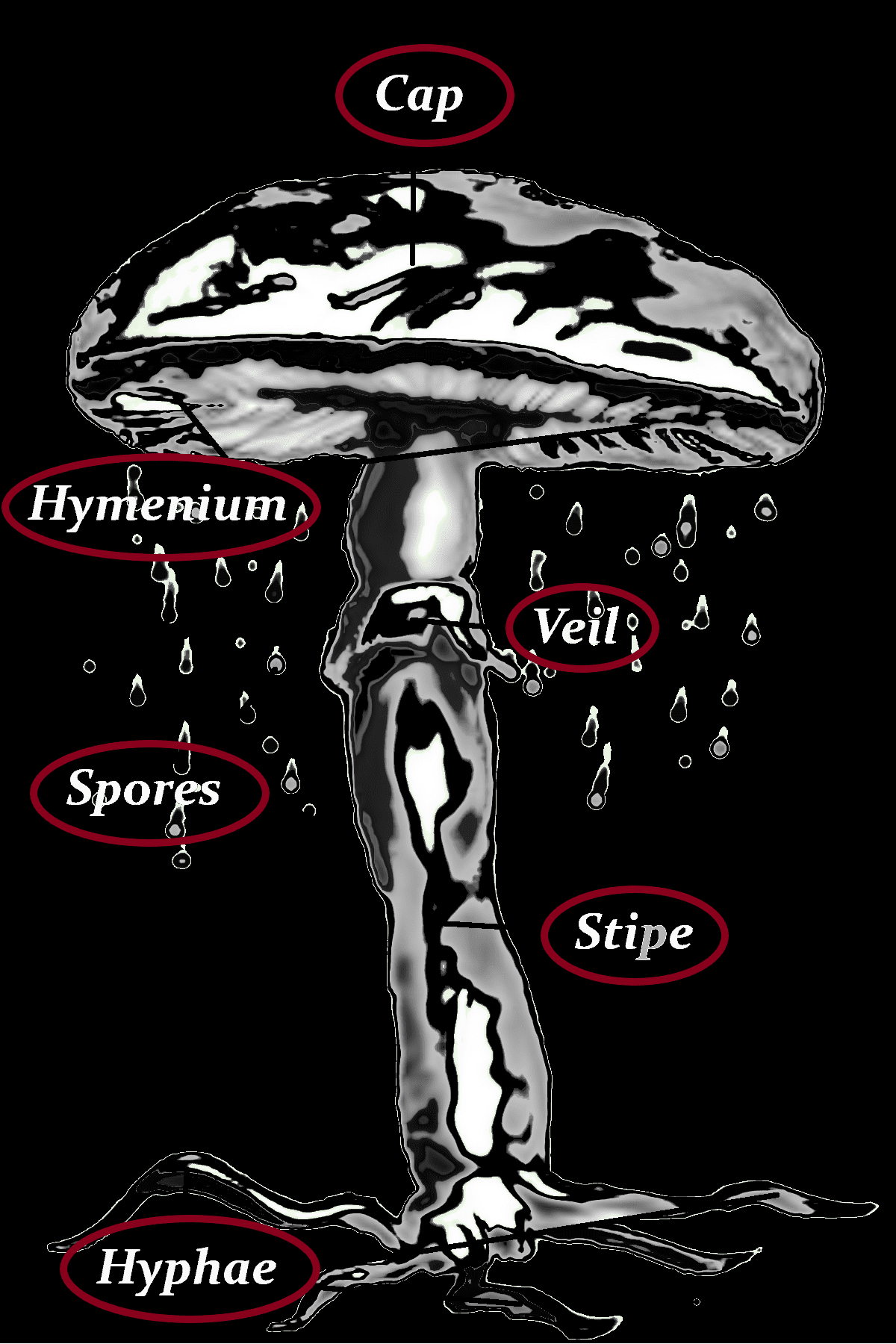
Stipe
no stipe
Veil
no veil
Spores
spherical
rough surface
produced in chains
initially white then yesllowish-white
finally greenish-yellow
Danger of confusion
The primary risk of confusion is with other species of koji mold, such as Aspergillus sojae and Aspergillus tamarii, which are also used in fermentation processes.
Hyphae
initially white then yellowish-white
finallygreenish-yellow
© blatest
Consuming
Gorumet Perception
Aspergillus oryzae strength is that it produces a rich, fruity, and refreshing flavor, so it is still used by some producers despite the difficulty and great skill it requires.
Smell
koji
Taste
from this one Sake is made, Koji-rice is sweet
Flesh
greenish-yellow
Here’s how to unlock the true root of Your Brain
– Without worrying about low quality ingredients
Nutritional content of 100g
| Nutrient | Amount per 100g |
|---|---|
| Calories | ~300 kcal |
| Protein | ~25-30 g |
| Carbohydrates | ~40-50 g |
| Fat | ~3-5 g |
| Fiber | ~5-7 g |
| Ash | ~2-4 g |
| Moisture | ~5-10 g |
| Amino Acids | Varies, includes all essential amino acids |
| Vitamins | B vitamins (B1, B2, B6), some traces of others |
| Minerals | Includes potassium, magnesium, calcium, and iron |
Composition
Aspergillus oryzae, commonly known as koji mold, is a filamentous fungus used extensively in fermentation processes, particularly in Asian cuisine. Its composition includes a variety of nutritional and biochemical components that make it effective in breaking down complex organic materials into simpler forms.
Nutritional Composition
Proteins
- Content: Approximately 25-30% of its dry weight.
- Role: Koji mold contains a range of enzymes such as proteases, which break down proteins into amino acids.
Carbohydrates
- Content: About 40-50% of its dry weight.
- Role: These are mainly polysaccharides, including starches, which the mold can break down into simpler sugars through the action of amylases.
Lipids
- Content: Around 3-5% of its dry weight.
- Role: Though present in smaller amounts, lipids contribute to the energy storage and structural components of the mold.
Fiber
Content: Approximately 5-7% of its dry weight.
Role: Dietary fiber aids in the structure of the mold and its resilience in different growing conditions.
Minerals
Common Minerals: Potassium, magnesium, calcium, and iron.
Role: Essential for various biochemical processes and enzyme function.
Vitamins
Common Vitamins: B vitamins such as B1 (thiamine), B2 (riboflavin), and B6 (pyridoxine).
Role: These vitamins are crucial for metabolic activities and overall health of the mold.
Biochemical Composition
Enzymes
- Amylases: Break down starches into sugars.
- Proteases: Degrade proteins into amino acids and peptides.
- Lipases: Hydrolyze fats into fatty acids and glycerol.
- Cellulases: Decompose cellulose into glucose.
Secondary Metabolites
Aspergillus oryzae can produce a variety of secondary metabolites, which include organic acids and other compounds that may have antifungal or antibacterial properties.
Unique Components
Koji Peptidases
Specialized proteases unique to A. oryzae that enhance the breakdown of proteins in fermented products, improving flavor and texture.
Alpha-Amylase Variants
Unique amylase enzymes that are highly efficient at breaking down starches at the specific conditions used in traditional Asian fermentations.
Isoamylase
An enzyme not commonly found in other molds, which helps in the breakdown of branched starches, contributing to the distinctive texture and sweetness of fermented products like sake and miso.
other names
- English: Aspergillus oryzae
- German: Aspergillus oryzae
- French: Aspergillus oryzae
- Spanish: Aspergillus oryzae
- Italian: Aspergillus oryzae
- Portuguese: Aspergillus oryzae
- Chinese (Simplified): 米曲霉 (Mǐ qū méi)
- Japanese: ニホンコウジカビ (Nihon kōji kabi)
- Korean: 누룩곰팡이 (Nuruk gom pang-i)
- Russian: Аспергиллус оризае (Aspergillus orizae)
- Dutch: Aspergillus oryzae
- Arabic: أسبرغيلوس أوريزا (Aspergillus oriza)
- Hindi: एस्परगिलस ओरीजाए (Aspergillus oryzae)
- Turkish: Aspergillus oryzae
- Tschechisch: kropidlák rýžový
Aspergillus flavus var. oryzae, Nihon Kōjikabi, kōjikin, Hefe-Pilz, 麴霉菌 / 曲霉菌, [麴菌/曲菌], Pinyin qūmeíjūn, 누룩곰팡이, nurukgompangi, Gießkannenschimmel
Taxonomical Hierarchy
| Kingdom | Fungi |
|---|
| Division | Ascomycota |
| Class | Eurotiomycetes |
| Order | Eurotiales |
| Family | Trichocomaceae |
| Genus | Aspergillus |
| Species | A. flavus var. oryzae |
| Ecology |
Any Sale Helps us Doing what we Love 😊






































